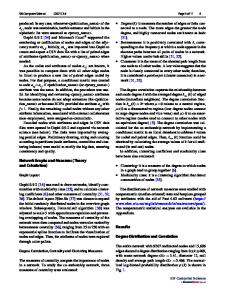The Density of States in a -Si:C:H Revealed by Electrophotography
- PDF / 298,587 Bytes
- 6 Pages / 414.72 x 648 pts Page_size
- 13 Downloads / 344 Views
THE DENSITY OF STATES IN a-Si:C:H REVEALED BY ELECTROPHOTOGRAPHY R. A. C. M. M. VAN SWAAIJ, W. P. M. WILLEMS*, J. BEZEMER, M. B. VON DER LINDEN and W. F. VAN DER WEG, Department of Atomic and Interface Physics, Debye Institute, Utrecht University, P. 0. Box 80.000, NL-3508 TA Utrecht, The Netherlands, *Stork Colorproofing B.V., P. 0. Box 210, NL-5830 AE Boxmeer, The Netherlands. ABSTRACT Electrophotographic dark decay measurements have been used to determine the surface density of states (SDOS) of a-Si:C:H. Injection of trapped charge from these deep states into the conduction band governs the dark discharge of a photoconductor, provided bulk generation and bulk space charge are negligible. It is found that the SDOS profiles peak around 0.60 eV below the conduction band for materials with different carbon concentration. This observation implies that the energy position of these states is fixed with respect to the conduction band edge, even though the optical band gap of these materials increases with increasing carbon concentration. The nature of these states may be ascribed to D- states, whose density is strongly enhanced by filling Do states when the material is charged negatively. Furthermore, we observed that the SDOS around 0.60 eV below the conduction band edge is approximately the same for materials with up to 8 at.% carbon. From temperature dependent measurements a value of 2 • 10i s-' was obtained for the attempt-to-escape frequency.
INTRODUCTION The electrophotographic process [1] with high resolution laser imaging, e.g. 100 lines
per mm, is a typical application for a photoconductor with a high photosensitivity and an optimized number of deep traps. A sufficient number of deep traps are needed to maintain a low surface injection of charge carriers into the bulk and a low lateral dark conductivity. For this reason, photoreceptors based on a-Si:H are usually provided with an a-Si:C:H layer, which contains a high density of deep states [2]. The near surface density of states (SDOS) of devices for electrophotographic processes and similar thin films can be probed by the measurement of an electrophotographic dark decay. This method is in particular useful for materials which exhibit a very low dark conductivity, so their density of states is difficult to measure by techniques like Thermally Stimulated Conductivity (TSC) and Space Charge Limited Current (SCLC). This paper reports on the measurement of the SDOS of a-Si:C:H, detected by the electrophotographic method. The surface potential decay rate of thin films is mainly due to the injection of trapped charge into the film and is given by: dV(t)
dt
L
da(t)
eoe6 dt
(1)
where ar is the surface charge density, L the film thickness and e6 the relative permittivity of the material. In this paper we assume that the decay rate of the film is governed by
Mat. Res. Soc. Symp. Proc. Vol. 297. @1993 Materials Research Society
694
TT = 22°C .
30
------T = 80°C-
A
(b)
100
T = 40WC............ ..... T = 60°C
(a) Ce
> >
10
S0 00 0
•,A ...... .... ....
Data Loading...








